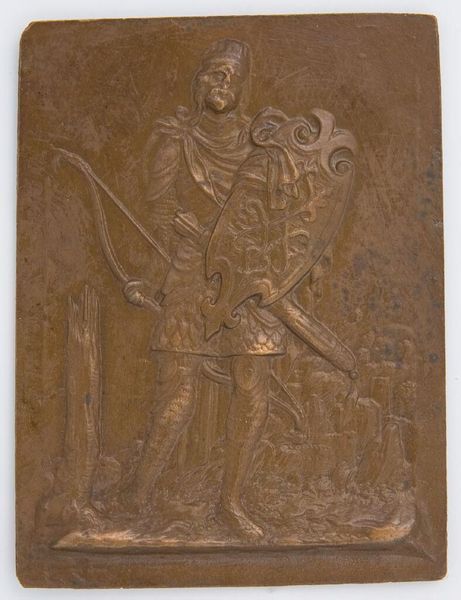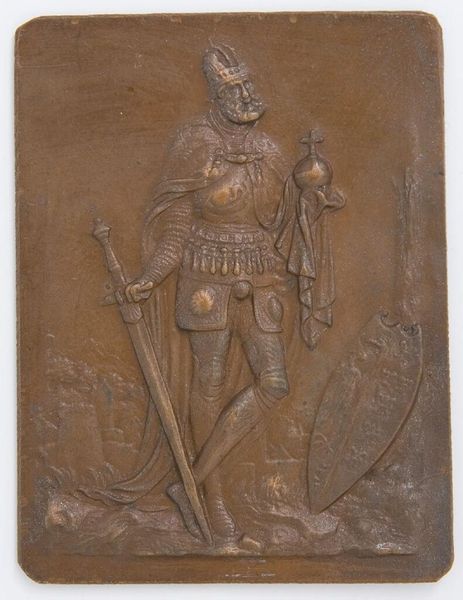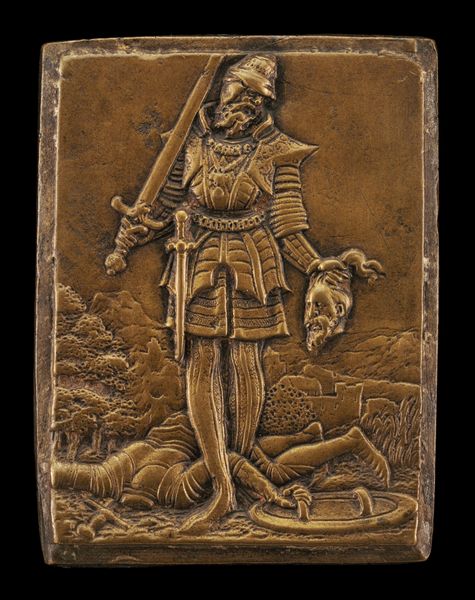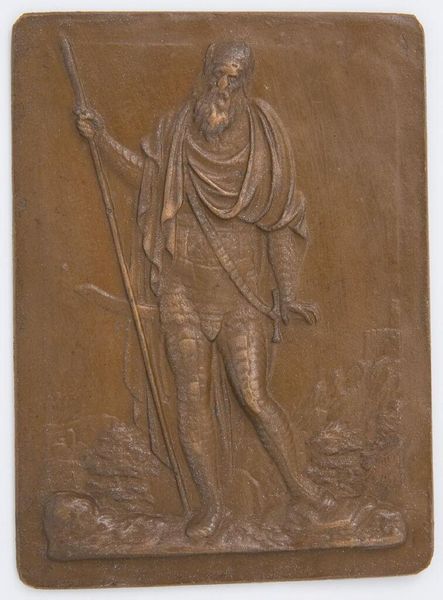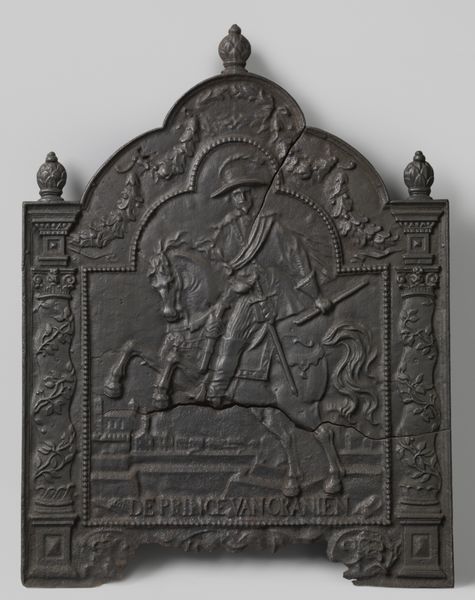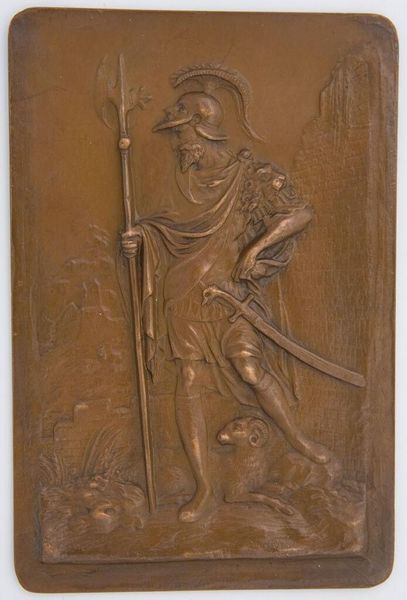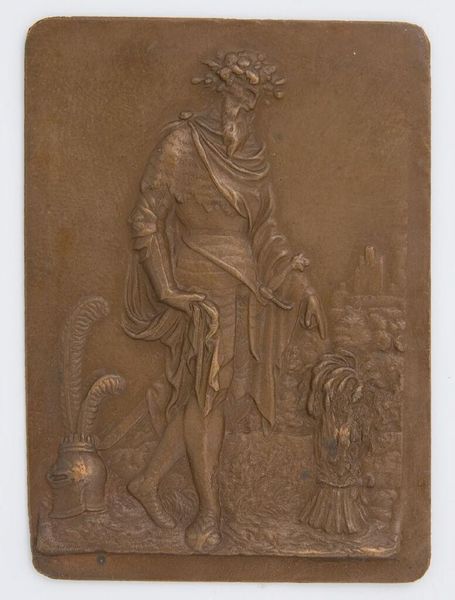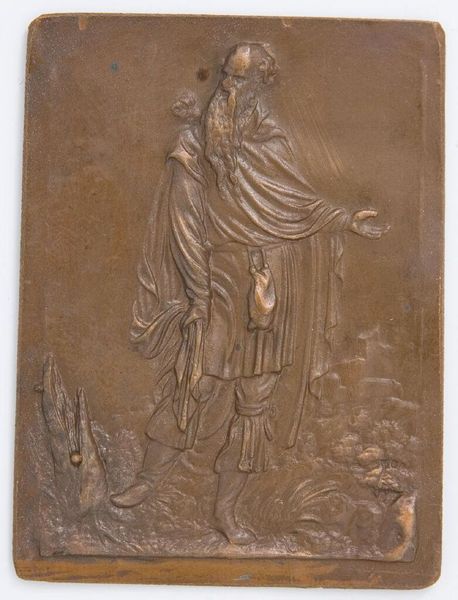
Arminius, from the series "The Twelve Oldest German Kings" early 20th century (original from c.1540)
0:00
0:00
Dimensions: 5.6 x 4.2 cm (2 3/16 x 1 5/8 in.)
Copyright: CC0 1.0
Curator: This small bronze relief, titled "Arminius," is part of the series "The Twelve Oldest German Kings," its maker remains anonymous. Editor: It's strikingly brutal. Arminius stands triumphant, a severed head in his hand, foot planted firmly on a fallen enemy. Curator: The piece speaks volumes about the cultural fascination with heroism and national identity in early Germany. Consider the laborious process of bronze casting and the deliberate choice of Arminius, a symbol of resistance against Roman occupation. Editor: Absolutely. The head serves as a potent, if gruesome, emblem of victory, echoing classical tropes of power and dominance. His elaborate armor and the meticulous depiction of the slain foe amplify this narrative. Curator: The materiality reinforces this. The bronze itself suggests permanence, a deliberate attempt to immortalize the subject and mythologize German history. Editor: Looking at it now, it presents a raw, visceral depiction of power and resistance. Curator: Indeed, it’s a small work that reveals much about how cultural memory can be shaped by material objects. Editor: A compact, but brutal encapsulation of legend and legacy.
Comments
No comments
Be the first to comment and join the conversation on the ultimate creative platform.
